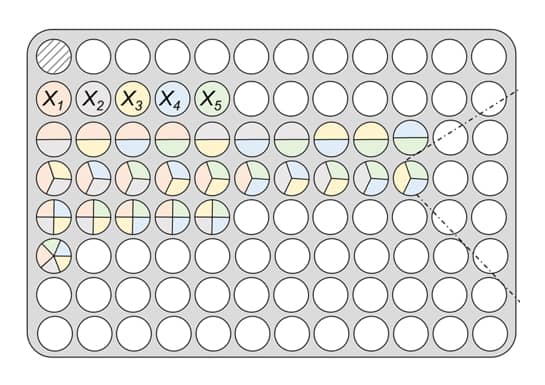September 10, 2018

Data show better infrastructure and good governance lower antibiotic resistance. A study of 73 countries, based on economic and public health data from CDDEP’s ResistanceMap, the World Bank, and Transparency International, has found that better infrastructure and better governance were significantly associated with lower measures of antimicrobial resistance. The findings were published by CDDEP Director Ramanan Laxminarayan with colleagues from Australian National University, Cardiff University, and the Monarch Institute. With resistance genes already widely disseminated in the environment, Laxminarayan says, “preventing transmission of resistant pathogens through investments in improved water and sanitation and primary healthcare are central to our ability to tackle antimicrobial resistance.” [Lancet Planetary Health, Hindustan Times]
EU influence could positively impact India’s environment and health crises. In a special EU-India supplement of The Parliament Magazine, CDDEP Senior Fellow Isabel Frost and Director Ramanan Laxminarayan write that the European Union must act to ensure that, throughout the supply chain, companies producing antibiotics and precursor ingredients are held to the same strict environmental standards that are in effect in Europe. They call for EU investments in India and other developing countries to support vaccination, antibiotic stewardship, and infection control to improve global biosecurity. [The Parliament Magazine, EU-India Supplement]
Multidrug-resistant S. epidermidis has silently spread to hospitals worldwide. Three near pan-resistant strains of the common skin bacteria Staphylococcus epidermidis have been discovered in healthcare facilities in Australia, Europe, and the US. The strains are resistant to quinolones, macrolides, and sulfonamides, and their resistance to teicoplanin, rifampicin, and fusidic acid increased tenfold in six years in an Australian hospital. Researchers from University of Melbourne also reported that S. epidermidis is becoming less susceptible to vancomycin, a last resort treatment for multi-drug resistant staphylococcal infections. [Nature Microbiology, Medical Xpress, Nature Microbiology Community]
In spite of strict agricultural controls, swine fever is spreading in Europe and Asia. China, with more pig production than any other country, has become the latest country hit by swine fever, a fast-moving viral disease affecting pigs, wild boars, and warthogs. An article in The Guardian describes the viral pandemic that began in 2014 and spread from Lithuania to at least eight countries in Eastern Europe. German farmers are now advocating for the culling of wild boars to protect their pigs from infection, and Denmark is planning to build a fence along the German border to keep out the wild boars. While the virus is mostly spread through contact with infected animals or soil, past outbreaks have shown that Spain is at additional risk due to infected ticks, whose bite can transmit the pathogen. [The Guardian]
New, complex antibiotic combinations found effective against E. coli. Biologists at the University of California, Los Angeles report they have netted over 8,000 potentially useful new combinations of up to five antibiotics each when they systematically tested the drugs against E. coli in the lab. Many compounds that lacked potency individually or in pairs were found to demonstrate antibiotic effectiveness in groups of three or more. [EurekAlert, npj Systems Biology and Applications]
Provider understanding of antibiotic resistance translates to better prescribing. Nearly 30% of 264 primary care providers surveyed in in South Africa reported thaton about half of the occasions in which antibiotics were “not absolutely necessary,” they nonetheless prescribed the medicines. In a paper describing the self-administered survey, the authors state that respondents with lower knowledge scores were more likely to prescribe unnecessary antibiotics. Those with lower knowledge scores were also more likely to report that unnecessary antibiotics cannot harm the patient. [South African Medical Journal]
Tests in mice and petri dishes show fosfomycin is effective in treating listeria. Researchers in the UK have found evidence that the antibiotic fosfomycin can kill listeria, a potentially lethal infection, despite the presence in listeria of a genetic sequence that codes for resistance against the drug. The study has uncovered a complex in vivo epistatic effect between the resistance and virulence factors that leads to fosfomycin entering and destroying the bacterial cell. [PLoS Genetics, EurekAlert]
Technology meets medicine as CDC uses HP “printers” to fight AMR. The Antibiotic Resistance Coordination and Strategy Unit at the Centers for Disease Prevention and Control (CDC) has partnered with HP to experiment with printable antibiotics using a technology capable of delivering microdoses of medication. Resembling an inkjet printer, the HP D300e Digital Dispenser BioPrinters will be used in four regional CDC labs to provide rapid diagnostic information. [Digital Journal, HP]
TB Alliance begins clinical trial of four-drug combination therapy. A clinical trial of BPaMZ, a treatment including bedaquiline, pretomanid, moxifloxacin, and pyrazinamide, has been launched by TB Alliance, a not-for-profit product development partnership whose mission is to find affordable, effective, shorter treatment regimens for multidrug resistant tuberculosis (MDR-TB). The 450 participants will be enrolled at 26 centers in 10 countries in Africa, Asia, Europe, and Latin America. Those with MDR-TB or mono-resistance to isoniazid or rifampicin will receive BPaMZ daily for six months. A group with drug susceptible TB will take BPaMZ for four months, and a control group will take the standard treatment, isoniazid, rifampin, pyrazinamide, and ethambutol (HRZE) for six months. [TB Alliance, The Courier]
Image Credit: Elif Tekin et al (http://creativecommons.org/licenses/by/4.0/)











